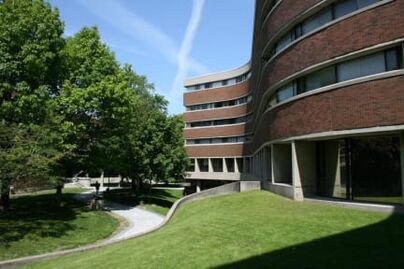Progressive academia otherwise known as progressive traditionalism is an aesthetic and academic philosophy based upon the style of academic delivery and collegiality at “modern” urban universities, especially those of the Commonwealth. It is important to note that progressive academia should not considered a pure subset of the larger academia family, but more a deconstructed version of it, influenced by the Commonwealth movements for progressive university education and mid to late-1900s architectures. An example of a new progressive-styled university college is New College (Toronto).
Progressive academia started with the foundation of New College at the University of Toronto in 1962. As such, it is a movement with its roots in Canada and the larger Commonwealth's evolving academic traditions, especially in the values of diversity and anti-conformity.
Progressive academia is a manifestation of the progressive movement in universities and in education-at-large, but it is important to note that progressive academia is still based around the tenets of classical academia, while actively rejecting all "restrictive" views of academia, making it a syncretic position between more "traditional" and "progressive" aesthetics.
Popular architectural styles are brutalist, or curvilinear architectures similar to the work of Douglas Cardinal.

The architecture of New College, Toronto is an example of progressive academic aesthetics are modern buildings juxtaposed with a naturalistic or simplistic backdrop.
Design Values
Spaces that are designed in a progressive academic manner usually conform to certain basic standards:
- They must be simple in design, and conform with a general and traditional colour palette;
- They must be either of a brutalist, or of a curvilinear architecture, or attempt to recreate those spaces in the most faithful manner possible;
- They must be designed for maximum "openness" and not feel restrictive;
- They must be designed with materials that complement one another (e.g. brick and wood, but not brick and plastic);
- And they must be able to both function as a place for learning, a place for socialization, and a place for business at the same time.
If one wishes to dress in a progressive academic manner, it would be prudent to follow design rules 1, 3, and 4 when choosing an outfit.
Written works similar to this aesthetic

The interior of the Halifax Central Library is another great example of progressive academic aesthetic, using simple shapes and simplistic design to complement an academic setting.
- The International Handbook of Progressive Education by M. Y. Eryaman & B. C. Bruce
- The Consequences of Modernity by A. Giddens
- Social Acceleration: A New Theory of Modernity by H. Rosa
- Les sources du moi: la formation de l'identité moderne by C. Taylor
